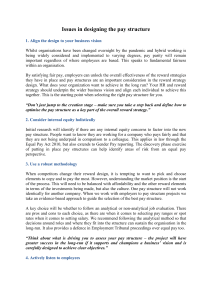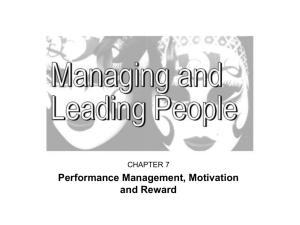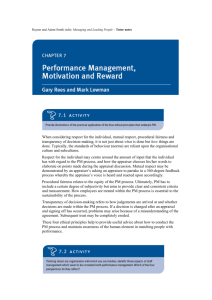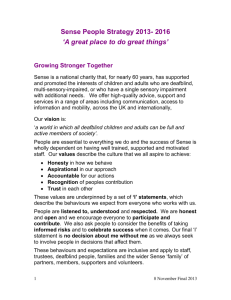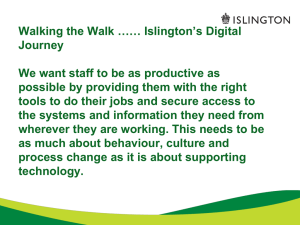Organisational culture risk assessment
advertisement
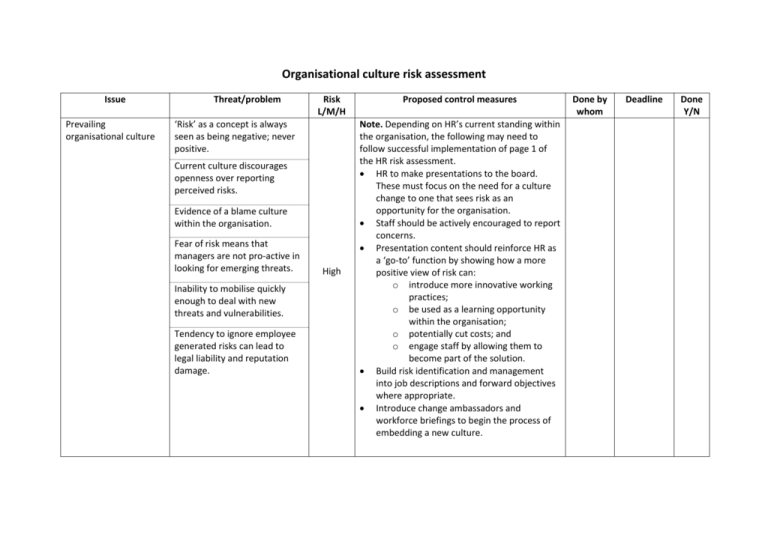
Organisational culture risk assessment Issue Prevailing organisational culture Threat/problem Risk L/M/H ‘Risk’ as a concept is always seen as being negative; never positive. Current culture discourages openness over reporting perceived risks. Evidence of a blame culture within the organisation. Fear of risk means that managers are not pro-active in looking for emerging threats. Inability to mobilise quickly enough to deal with new threats and vulnerabilities. Tendency to ignore employee generated risks can lead to legal liability and reputation damage. High Proposed control measures Note. Depending on HR’s current standing within the organisation, the following may need to follow successful implementation of page 1 of the HR risk assessment. HR to make presentations to the board. These must focus on the need for a culture change to one that sees risk as an opportunity for the organisation. Staff should be actively encouraged to report concerns. Presentation content should reinforce HR as a ‘go-to’ function by showing how a more positive view of risk can: o introduce more innovative working practices; o be used as a learning opportunity within the organisation; o potentially cut costs; and o engage staff by allowing them to become part of the solution. Build risk identification and management into job descriptions and forward objectives where appropriate. Introduce change ambassadors and workforce briefings to begin the process of embedding a new culture. Done by whom Deadline Done Y/N Issue Responsibilities for employee risk not defined Threat/problem A lack of board level ownership of the issue is a governance problem. Risk L/M/H Proposed control measures High Lack of diversity at board level Threat of mandatory quotas being introduced to get more women on boards. Problems with reward Current reward schemes still structure incentivise risk taking behaviour. Operation of reward structures not transparent enough. International culture Board is currently too ‘male, pale and stale’ which puts it at risk of a ‘groupthink’ mentality. Failure to acknowledge that views on risk will vary between different countries leads to time-wasting conflict and misunderstandings. Medium The board must decide which department will assume overall responsibility for employee risk. This should be HR. For this to work in practice, the HR director must have sufficient authority at board level in order to bring about necessary changes. Introduce a formal mentoring programme that includes suitable female employees and those from ethnic minority backgrounds that display leadership qualities. As part of this process, work with the board to define the criteria for entry to such a programme. Review the competencies required and how they can feed into the existing appraisal and forward planning process. Review employee reward schemes to better align them with organisational objectives. Keep our reward structure under continual review to ensure it rewards the right behaviours and objectives. Explain in the staff handbook how our revised reward structure will work as well as the behaviours that will be rewarded. Use Geert Hofstede’s website on national culture for background information on how well risk is perceived and tolerated by different nationalities (http://geerthofstede.com/countries.html). Done by whom Deadline Done Y/N


